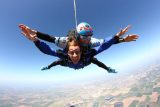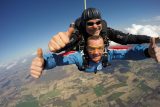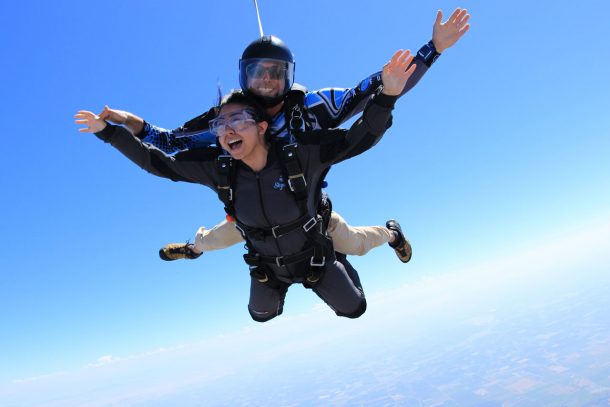Skydiving is an inherently risky sport. You are, after all, jumping out of a perfectly good airplane! The most recent data from the USPA (United States Parachute Association) shows that the number of fatalities per 100,000 jumps was 0.51 in 2022, which translates to 1 fatality in 200,000 jumps. Considering the 1961 report of 11.12 fatalities per 100,000 skydives (22 in 200,000), this is a dramatic difference. The consistent decrease in the skydiving fatality rate over the years is a testament to the great leaps that have been made in terms of skydiving technology, processes, advances in training methodologies, and best practices.
The safety improvements in skydiving are a direct result of the skydiving community’s ongoing commitment to mitigating risk. We love skydiving, and we can only do it thousands of times over and share it with everyone who wants to experience the freedom of flight if we keep ourselves, and others, as safe as possible. It’s all about self-discipline, compliance, accountability.
Simply put: Skydivers put safety first in every aspect of the sport. It’s contrary to what the media would have you believe, but it’s true. Let’s take a look at skydiving safety statistics, how they compare to other activities, and why skydiving continues to attract tens of thousands of new jumpers every year.
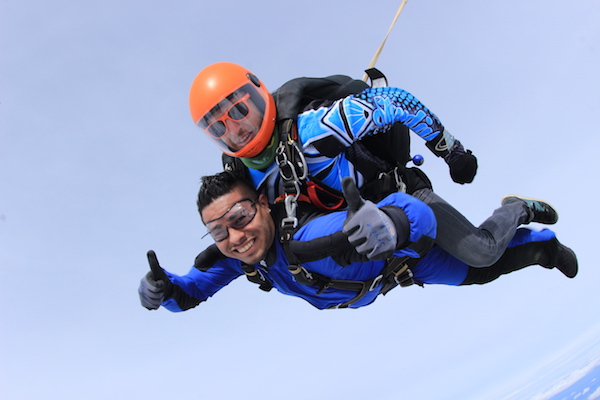
Who Is The USPA?
The USPA is the governing body for the sport of skydiving here in the USA. Skydiving centers are not required to be members of the USPA, but the majority choose to be for the oversight, guidance, support, and credibility it provides.

There are three key points in the USPA mission:
- to promote safe skydiving through training, licensing, and instructor qualification programs
- to ensure skydiving’s rightful place in airports and the airspace system
- to promote competition and record-setting programs
The licenses and ratings provided through the USPA are internationally recognized, and many overseas dropzones are USPA Group Members. This means that these non-US-based DZs strictly adhere to the recommendations and regulations set by the USPA. They’re the best of the best!
The USPA is proud to have more than 42,400 members and more than 220 affiliated dropzones in the United States alone.
Are Skydiving Injuries Common?
More often than not, injuries in skydiving occur as a result of human error. Injuries are more common than fatalities in skydiving, but still far less common than you might think. Jumping out of an airplane, falling at 120 mph+, and deploying a parachute to come in for landing is tough stuff. It’s to be expected that now and again, things won’t go entirely to plan.
Accidents and injuries are most frequently attributed to licensed skydivers trying something more advanced than their skill set allows. Other times, it’s as simple as somebody weirdly landing on an ankle, not stretching enough ahead of heading up to altitude and pulling a muscle, or taking a tumble when they trip over their own feet.
Confidence is a necessity in skydiving; cockiness leading to complacency is not. The skydiving community encourages jumpers to have mentors in the sport to prioritize a culture of safety and focus on learning. Every March, hundreds of dropzones host Safety Day – a USPA-sanctioned day that refreshes methods and techniques for skydivers of all levels.
Skydiving Safety Statistics: How Do They Compare?
What is more risky than skydiving? Just about everything! The following statistics are grim, but we use them to help right-size the probability of being injured or dying while skydiving.
Odds of motor vehicle fatality
Is skydiving statistically safer than driving a car? Oh yes! That’s why you often hear people saying that your drive to the dropzone is the most dangerous part of your day. The chances of a fatality through a motor collision is 1 in 93.
Odds of pedestrian fatality
Strolling down the street sounds lovely, yes? Most of the time it is … but, according to the National Safety Council, the odds of dying as a pedestrian are 1 in 485. It’s time to invest in some reflective vests…
Odds of choking fatality
Be careful if you’re eating while reading this! Your chances of choking on that delicious bite are 1 in 2,659. Chew thoroughly, friends.
Odds of bicycle accident fatality
They’re a much more environmentally friendly form of transport than the car, but bicycles aren’t without their risk. The odds of dying in a bicycle accident are 1 in 3,546.
Odds of dog attack fatality
Man’s best friend isn’t always so friendly. The chances of being killed by an attack from a dog are 1 in 53,843.
Odds of insect bite fatality
These little guys are responsible for pollinating our plants and keeping our world looking and smelling great. But 1 in 54,516 people will likely die from contact with a hornet, wasp, or bee.
Odds of skydiving fatality
Now let’s put it into context: the odds of dying while skydiving are 1 in 200,000. Far less likely than bees, dogs, bicycles, and all of the other very ordinary and seemingly very safe activities we do day to day.
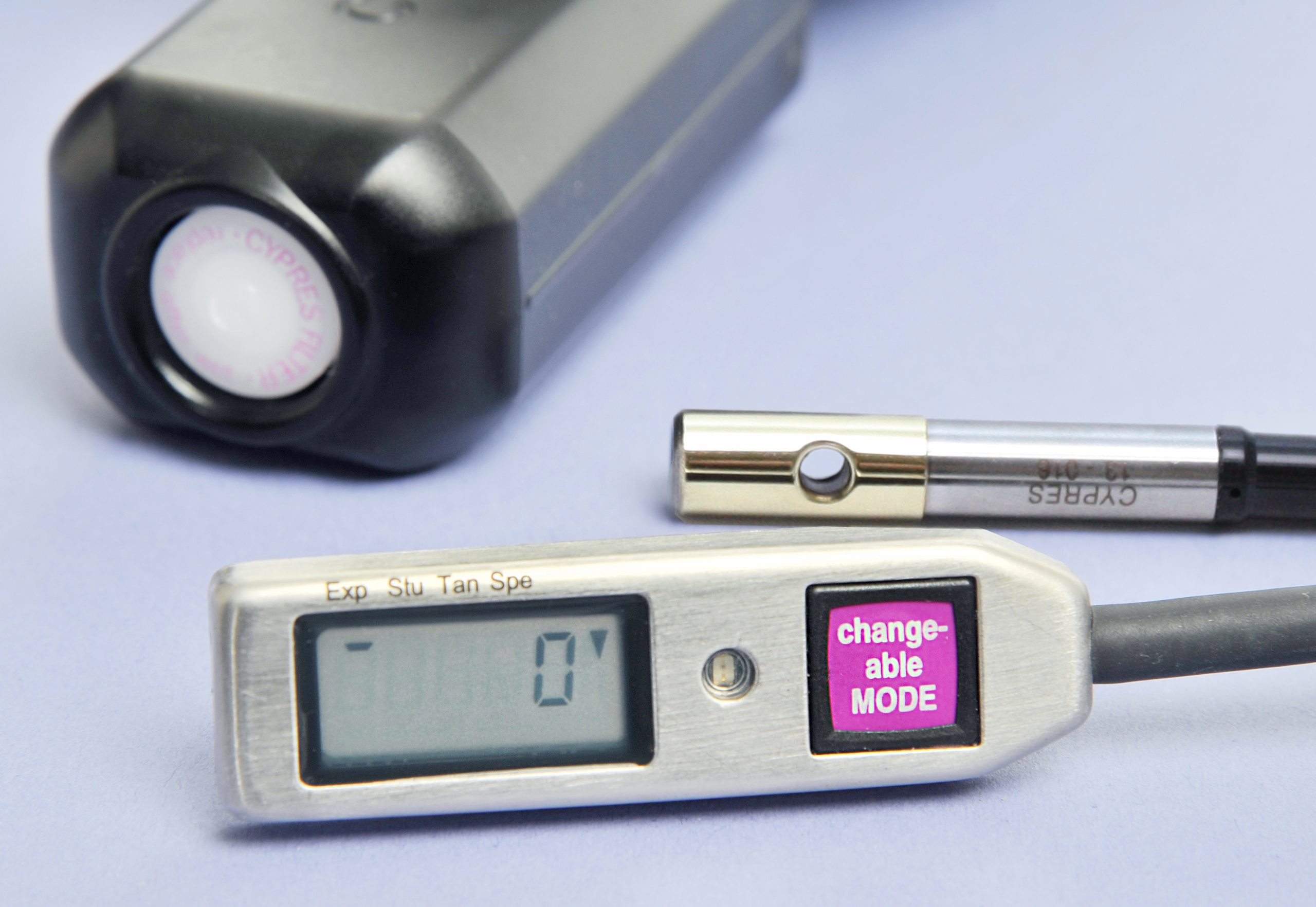
What Safety Measures Do Skydivers Have In Place?
Since the early days of skydiving, there have been some significant advances in technology, equipment, training, and processes.
Today’s skydiver always jumps with two parachutes – a main and a reserve. This means there is always a “spare” should the main parachute fail to deploy correctly. The malfunctioning parachute is released by the “3-ring release system,” pioneered by Bill Booth in the 1970s.
We also use a device called an AAD (Automatic Activation Device). This is a small computer that is snaked throughout the rig to monitor our rate of descent and altitude. In the unlikely event we are unable to deploy our parachute, the AAD will detect our speed and deploy the reserve parachute for us. AADs save lives!
Is It Actually Worth It?
Skydivers place a huge amount of importance on constant learning and improvement, and we think the risk of living without jumping is way more scary than the alternative. Skydiving offers a change in perspective, the chance to be a part of an incredible international community, and freedom like no other.
Skydiving is life-changing! Don’t let your fears hold you back – book your tandem skydive today and, of course, feel free to reach out to us with any questions. We can’t wait to have you at Skydive California!


